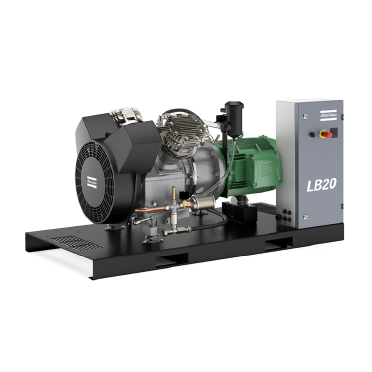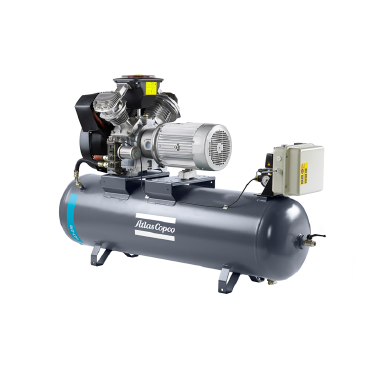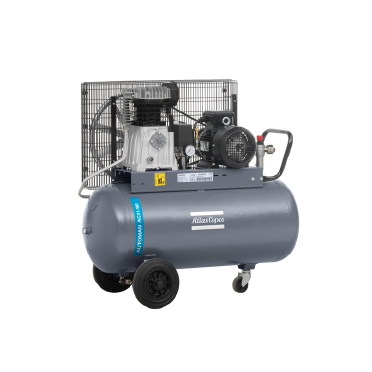As important as water and electricity, compressed air is a utility that’s essential for carrying out operations in almost every industry. No wonder, we see the air compressor market exploding in the Middles East, and also globally.
In fact, to support specific applications for each industry, air compressors are available in different types today. In this article, out of all compressor types, we discuss how reciprocating compressors function. So, if you’re setting out to purchase a Medium or High pressure reciprocating compressor in Bahrain, reading this article will familiarize you with the nitty-gritty of this compressor type before you get one for your facility.
Let us first understand the two types of compressor systems designs…
Before you jump into reciprocating compressors, let us first discuss what positive displacement is in compressor technology. Widely speaking, positive displacement compression and dynamic compression are the two compressor system designs based on which commercial air compressors are manufactured.
Running on Bernoulli’s principle, the design of a dynamic compressor ensures a slow-moving fluid puts greater pressure than a rapidly moving fluid. In other words, velocity and pressure are inversely proportional. Axial flow compressors and centrifugal compressors belong to this category of compressors.
Coming to positive displacement compressors, they rely on Boyle’s law, which means that pressure created by gas in a chamber increases when its size decreases. Here, volume and pressure are inversely proportional. Rotary screw compressors and reciprocating compressors are derived from this design.
Now that we know the working of reciprocating compressors, it’ll get easier for us to delve into its functional nuances.
Decoding the working mechanism of a reciprocating compressor
Basically, in reciprocating compressors, an air volume is sucked into the chamber via a valve. When the piston moves away from the valve, it creates a great volume within the chamber. As a result, the pressure within the chamber reduces (Boyle’s law).
Next, air moves from the high-pressure area outside of the chamber to the low-pressure area inside of the chamber. When the piston pulls back completely, its advancing stroke causes a reduction in the chamber’s volume.
And as the volume decreases, it automatically increases air pressure in the chamber. When the piston’s advancing stroke comes to a close, the compressed air gets discharged through the exit valve at high pressure.
For oil-free reciprocating high pressure compressors, the distance piece is a crucial design feature to safeguard your air quality by providing a physical separation in addition to the seals and packaging provided between oil-filled crankcase and oil-free cylinder.
What are the advantages of reciprocating compressors?
Also known as piston compressors, reciprocating compressors are in huge demand in the Middle East, including Bahrain. In fact, its global market is forecasted to grow by 5.92% by the end of 2025. No doubt new players are emerging in the market to cater to the growing customer base. Here are some popular applications of reciprocating compressors.
- Food and beverages (high pressure oil free air for PET blowing)
- Surgve vessels in desalination plants (high pressure oil free air)
- Electronics
- Laboratories
- Power industries
Today with the lastest innovation and development, high pressure oil-free compressors come in air-cooled varaints as well with discharge pressures up to 40 barg and Class 0 certificated quality, elimating the need for onsite constant cooling system. This soluiton is already a popular technology with wide referecnes within PET applications and water hammering in desalination plants.
If you are a product engineer or consultant considering installing a reciprocating compressor, these are the top benefits you can be assured of.
- As the technology is well-known, the machine’s spare parts are easily available and affordable.
- Always prefer to have a horizontal design for minimum vibrations and balanced load. Results in longer equipment lifetime and better reliability.
- Look for less piston speeds and lower interstage temperature for lesser wear and tear, thereby lesser service intervals.
- Internal components like valves, piston rods, packings and seals to be suitable for high humidity and high ambient 50 degC temparatures with special adapted material for lower risk of corrosion.
- Yes, pistons can also be offered with very low noise levels – up to 85 dba.
- This technology can be understood by anyone in the business, which means you will have it easy to find maintenance support.
- Available in a range of sizes, these compressors can support applications of small businesses and large facilities.
- Smaller compressors are often portable and quite suitable for site-specific operations.
Do you want to get an oil-free reciprocating compressor? Or do you have anything else specific in mind for your facility? Here is an insightful blog you can read for making a smart buying decision.
Looking for reciprocating compressors in Bahrain? Rely on Atlas Copco…
Atlas Copco has earned the trust of millions of buyers by manufacturing and selling cutting-edge compressed air & gas solutions, including reciprocating compressors, worldwide. Atlas Copco offers solutions for Air, Nitrogen and CO2 is oil-free technology to boost pressures up to 150 barg. Beyond that are industrial compressors and boosters in oil-injected where dischagre pressure can reach 350 barg. Be it 1.5 kW belt-driven compressors, or beyond 500 kW gas compressor for Methane or Hydrogen, we have an impressive portfolio of reciprocating compressors. Whether you want the oil-free variant or a portable model, get an Atlas Copco reciprocating compressor that takes the productivity of your industrial operations to the next level.
To discover our extensive product line and understand our offerings in-depth, you can read about Piston Compressors from Atlas Copco.
Should you have any further queries or need to know product details, don’t hesitate to get in touch with our distributor in Bahrain.


 Industrial piston compressor & booster - High pressure ≥15 bar
Industrial piston compressor & booster - High pressure ≥15 bar
